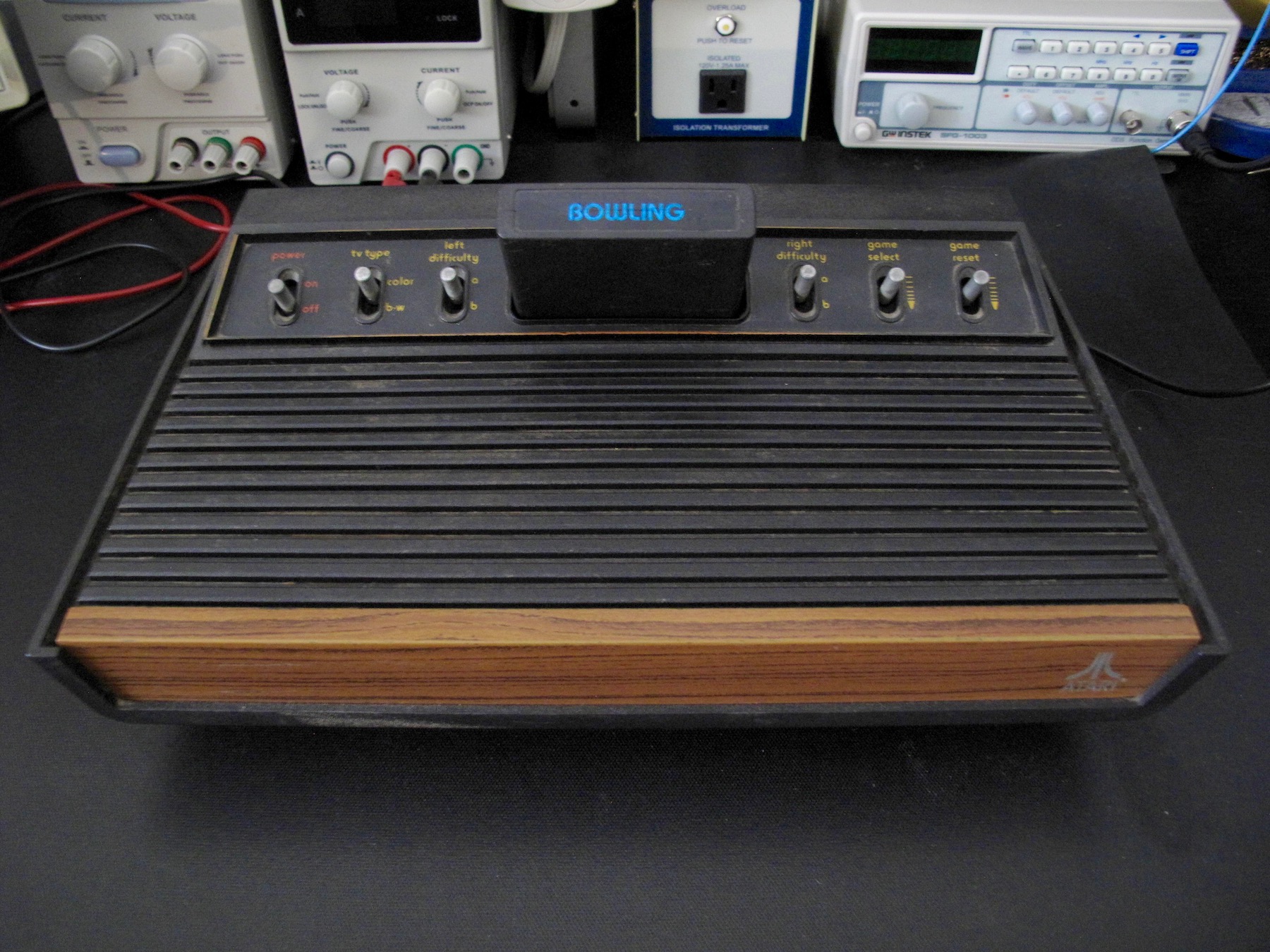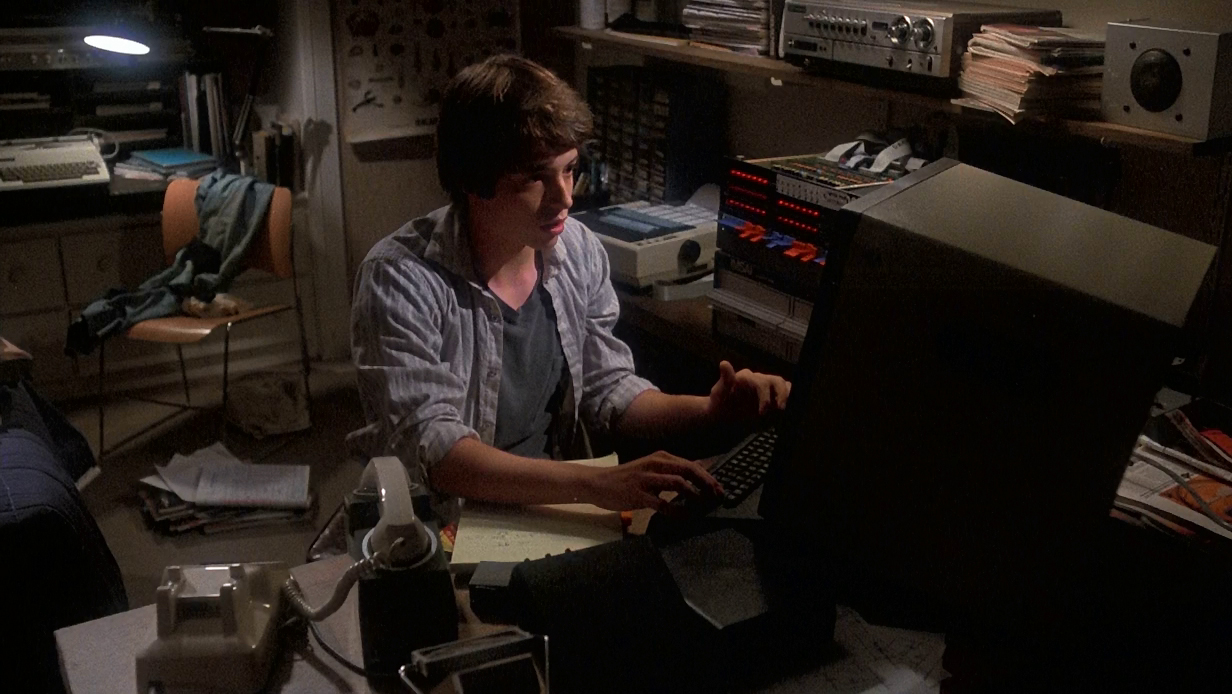Retrocomputing
Super Cool Computers from the 70s and 80s
1975
I’ve been interested in computers for almost as long as I can remember. The first time I saw one in real life, though, was way back in 1975 when my dad brought me to work one day. Nothing could have prepared my six year old mind for the coolness of “Spacewar!” beaming from a black & white vector graphics terminal connected to a giant PDP-11 minicomputer rack. Shortly thereafter, I went on a school field trip to a bank where we got to see an IBM System/360 in action, and we were all presented with a blank punch card on the way out! I guess you could say that I’ve been hooked on computers ever since.
I thought it would be fun to document some of the machines that I’ve used over the years — along with some that I continue to use as part of my retrocomputing hobby — with particular emphasis on the ones I felt had real character. Following is a brief timeline of my interest in computers, along with descriptions of some that I’ve rescued from the dustbin.
OK, so the Atari 2600 was really just a gaming system, but it was the first machine that I was able to take apart and see what was going on inside. We got one of these for Christmas I think in 1981 — a year or two after most of my friends already had one — and it remains one of the best gifts I ever received. By the time we got it, the games had gotten much better, and I spent many hours playing Asteroids, Defender, Raiders of the Lost Ark, Ms. Pac Man, and others. Once the novelty had worn off, I was able to take it apart and poke around without anybody noticing or complaining.
Some games were a bit difficult to control with the joysticks, so at some point in the early 80’s I decided to create a keypad using my parents’ old APF Mark V calculator and a broken Atari joystick. I wired the “8”, “6”, “2”, and “4” keys to the joystick cable’s “up”, “right”, “down”, and “left” functions respectively, and I originally wired the fire function to the “5” key, although that proved to be somewhat difficult to use. I later wired it to the larger “=” key. In practice, the keypad was harder to use than joysticks for most games, but it was still a fun little project.

The “CoCo”, as it was affectionately called, was my parents’ first personal computer, so I never actually got a chance to take this one apart. It had a pretty slow Motorola 6809E processor, only came with 4K of RAM, and could only display four colors, but the price was hard to beat at the time. Despite its limitations, my dad was able to use an assembler to successfully program a “horse racing” game that was a big hit at “Vegas night,” a fundraising event at my grade school. This was the first computer that I ever tried to write Basic programs on, and it actually wasn’t too bad once we upgraded it to 16K of memory, although I honestly can’t remember ever doing anything too amazing with it. Mostly, I just used the “Typing Tutor” program to try to learn how to type, which is kind of ironic given that this machine had one of the worst “chiclet-style” keyboards ever made.
The summer before I started high school was a big computer milestone for me. First, because I had an internship at the KU Medical Center Department of Radiology where I was surrounded by all kinds of wonderful machines. Granted, I was mostly just entering data into a spreadsheet program on an S-100 based Morrow Micro Decision II computer, then connecting printed dots on green bar paper based on these numbers and generated by a very slow plotter. That part wasn’t super exiciting, but I also got to drool over all kinds of cool electronic stuff including a Data General Eclipse minicomputer, a Heurikon Multibus-based machine running Unix System V (with an open case and tons of boards with wires running in and out), Z80-based microcontrollers, an Apple II Plus with Pascal, tons of Heathkit H19 monitors, modems, EPROMs, and lots more.
This is also the summer that the movie WarGames came out, and while I was fully aware that the featured Altair clone IMSAI 8080 in that movie was already pretty dated at that point, it was still an object of serious beauty and mystique. Lastly, I purchased my first computer that year when the Texas Instruments 99/4A went on sale for $150 (see below).

In the early eighties I decided I wanted to buy a computer of my own, but since my only income at the time came from mowing neighbors’ lawns at $10 a pop, my budget was very limited. The two main candidates when I first started looking were the Sinclair ZX80 and the Commodore Vic 20, but I ruled these out pretty quickly given their limitations. Then in early 1983, the TI-99/4A dropped in price from $300 to $150, at which point I picked one up at Skagg’s Drugs at the local Ranch Mart along with a $50 Extended Basic cartridge featuring Sprite graphics! I liked the way the TI-99 looked, and it actually had a fairly powerful 16-bit TMS processor. I had a lot of fun learning to write Basic programs on this machine, and with my Dad’s help, I was able to put together a decent clone of the Intellivision game Star Strike. After a while, I became interested in possibly doing some assembler programming using a $50 add-on package, but unfortunately adding a floppy disc was a fairly expensive proposition, requiring the insanely expensive $1500 extension box. There was just no way I was ever going to be able to afford one at the time. There were only a few cartridge games available, and the quality of the ones I had was pretty atrocious.
- PDP-11 Minicomputer – The First Computer I Saw in Real Life
- IBM System/360 – Mainframe Computer Popular with Banks in the 70s
- apf Mark V – Calculator I Converted to an Atari Joystick as a Kid
- Motorola 6809 – Processor Used in the TRS-80 “Coco”
- Morrow Micro Decision II – My Word Processor in High School
- Data General Eclipse Minicomputer
- Multibus – Bus Architecture Used by Heurikon Computer Running UNIX in 1983
- Club 100 – Tandy Model 100 Users Club
- Amstrad PCW – High School Graduation Gift I Used as a Word Processor in College
- Zilog Z80 – Processor Used in the Amstrad PCW and Countless Other 80s Computers
- CP/M – Operating System Used in the Amstrad PCW and Many Other Early Microcomputers